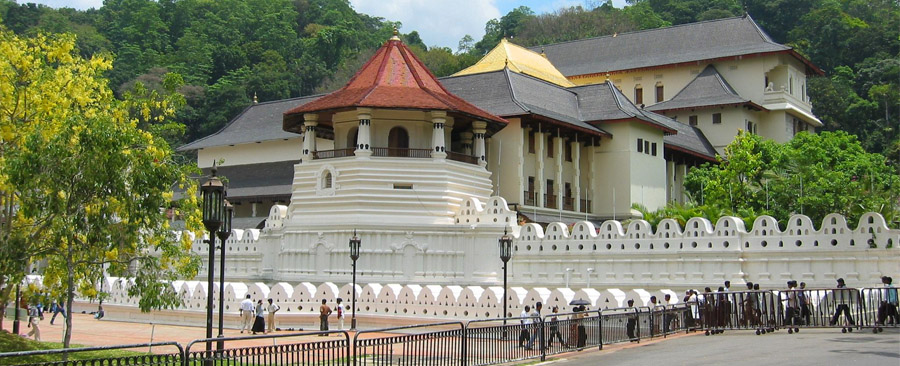
Kandy is a romantic city any time of the year, but in August, this ancient capital becomes the venue of one of the most legendary festivals in Asia, the Festival of the August Moon when thousands of people from all parts of the country and from foreign countries throng to the Hill Capital to witness the magnificent spectacle.
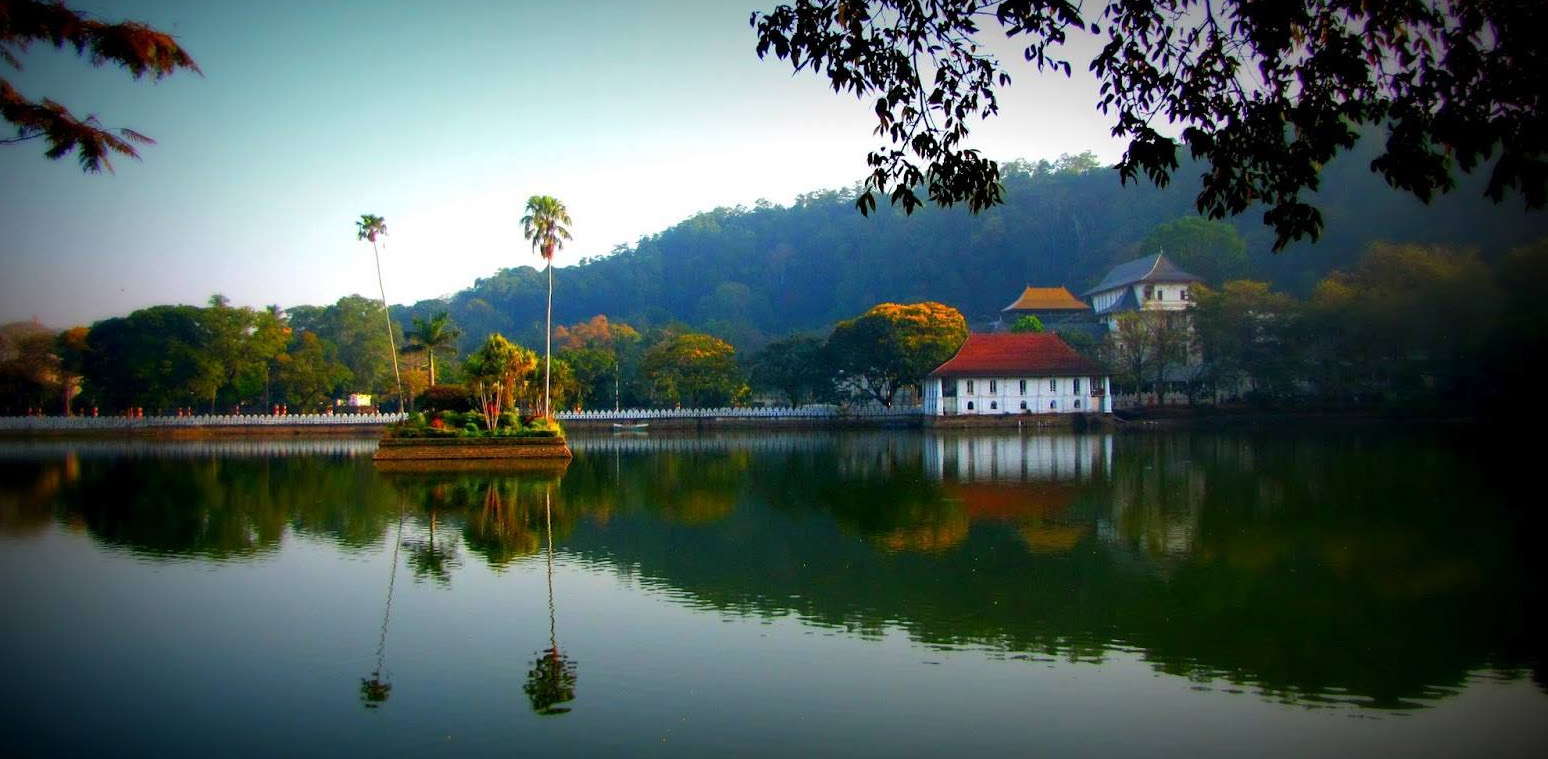
A lovely centrepiece to the town. Kandy Lake was created in 1807 by Sri Wickrama Rajasinha, the last ruler of the kingdom of Kandy. Several small-scale local chiefs, who protested because their people objected to labouring on the project, were put to death at stakes in the lake bed. The island in the centre was used as Sri Wickrama Rajsinha's personal harem, to which he crossed on a barge. Later the Birtish used it as an ammunition store and added the fortress style parapet around the perimeter of the lake. On the south shore, in fornt of the Malwatte Vihara, there's a circular enclosure which is the monk's bathouse.
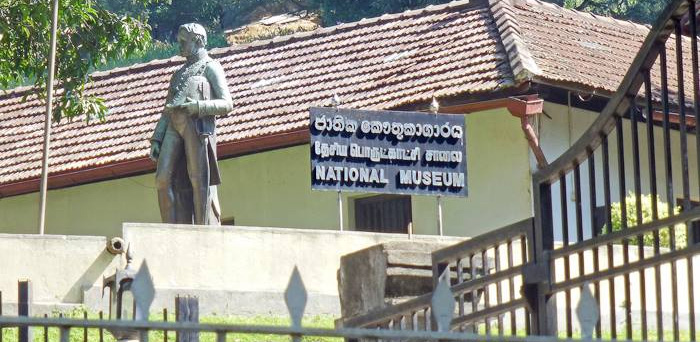
The latest institution added to the Dalada Shrine is the `Sri Dalada Museum'. Ever since the Tooth Relic shrine was established in Kandy, different grades of visitors and devotees, ranging from the Roylty and Heads of States to the poorest of the general public, have been offering various gifts to the Sacred Tooth Relic, and these were preciously protected in specially built store-rooms by the successive line of Diyawadana Nilames. THE DALADA MUSEUM is located on the first and the second floors of the new wing called the Alut Maligawa set up by one of the past Diyawadana Nilemes, T.B.Nugawela. The display on the first floor consists of historical records from the time when the Tooth Relic was brought to Sri Lanka to the time of the British rule.
Peradeniya Gardens Situated in the Hill capital Kandy. Visit to this garden will provide spectacles at extraordinary beauty and absorbing interest for any nature lover and casual visitor. 68 miles off-Colombo, 4 miles off Kandy this garden dates from 14th century reign of king Vikrama Bahu III. Peradeniya is well know for it's large variety of plants ornaments, useful machine and other creepers that produce the special spices at Sri Lanka. The great lawns highlight huge tropical trees and variety at bamboo can be found in one place.The best know attraction of the garden is the orchid House, which houses more than 300 varieties of exquisite orchids. A spice garden gives you a first hand introduction to the trees and plants used for the traditional Ayurvedic medicine.


Its name describes its outline. The Knuckles Range consists of the Knuckles massif, the Knuckles range and the Knuckles peaks. The Knuckles massif is about 90 square miles in extent and is a detached block of the central highlands separated from the main highlands by the the Dumbara Valley. There are 35 peaks rising to more than 3000 feet (915 m) in the Knuckles range. It has a rich variety of plant and animal life. Mammals include leopards, sambhur, mouse deer, barking deer, sloth deer, leaf monkeys, toque monkeys, wild squirrels, giant squirrels, wild boar, otter and lorries. Besides these, many species of amphibians, reptiles, butterflies, spiders, fish and birds can be found here.
Located in Kandy, long a center of the Buddhist faith, the stunning 17th-century Temple of the Tooth (Sri Dalada Maligawa) is believed to house the left upper canine tooth of the Lord Buddha himself. This precious relic attracts white-clad pilgrims, bearing lotus blossoms and frangipani, every day.
According to legend, the tooth was taken from the Buddha as he lay on his funeral pyre. It was smuggled to Sri Lanka in 313 AD, hidden in the hair of Princess Hemamali who fled the Hindu armies besieging her father's kingdom in India.
It immediately became an object of great reverence and was enshrined in a series of nested jeweled reliquaries. The tooth was brought out for special occasions and paraded on the backs of elephants, which are sacred to the Buddha. where it survived numerous attempts to capture and destroy it.
When the capital was moved to Kandy, the tooth was taken to the new city and placed in temples built to honor it. The temple was originally built under Kandyan kings between 1687 and 1707, but later severely damaged during the 18th-century colonial wars against the Portugese and Dutch. After the wars, the original wooden structures were restored in stone.
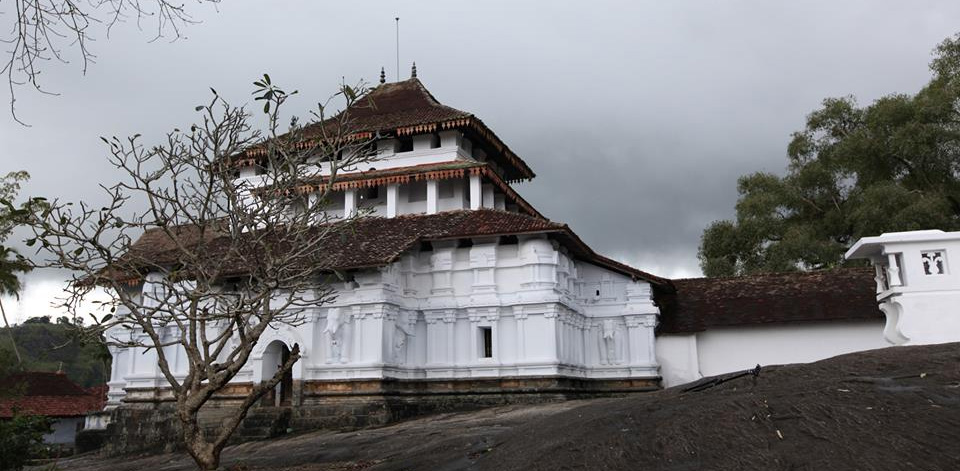
Lankatilake Temple is a 1.5km stroll along a path through the price paddies until you see the blue temple loom up on the left. It's a Buddhist and Hindu temple with fine views of the countryside, featuring a buddha image, Kandy-period paintings, rock-face image, Kandy-period paintings, rock-face inscriptions and stone elephant figures.
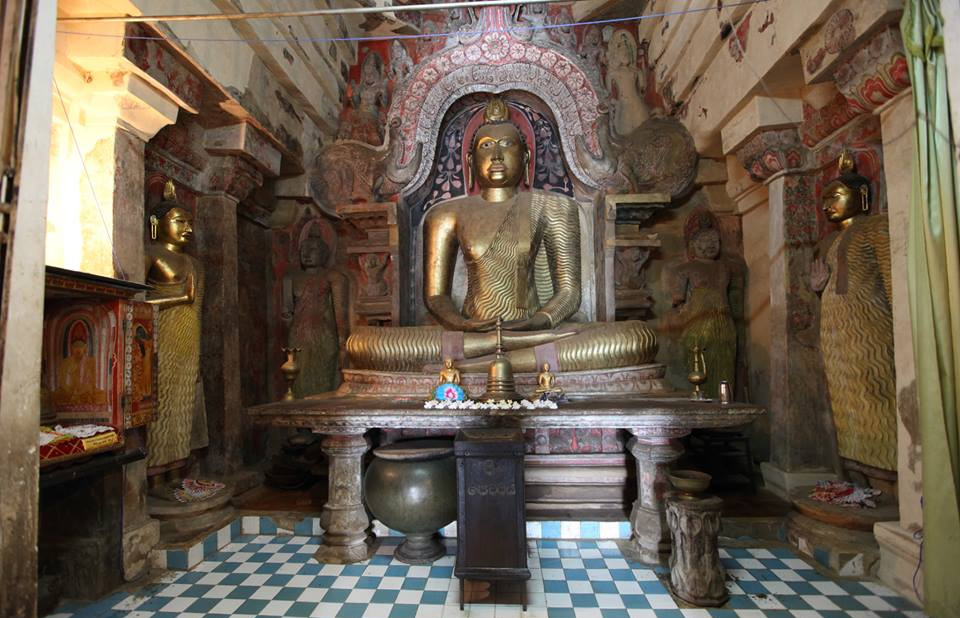
Gadaladeniya Viharaya Pilimatalawa, Kandy Built almost exclusively of stone in 1344 by the Gampola King Wicramabahu, situated on a hilltop, commanding views of the surrounding countryside.A moonstone marks the entrance to the main shrine. The architecture is Dravidian. The entrance porch features large stone pillars which support a roof of huge stone slabs.cted food offerings for centuries. Within the vihara, an ancient stone and plaster Buddha image looks down upon milk rice pots that have colle The 638 year old jak wood doors still exhibit their original paintings.
Kandy's principal Buddhist vhiaras (monastires) have considerable importance - the high priests of the two best known, Malwatte and Asgiriya, are most important in Sri Lanka. These temples are the headquaters of two of the main Nikayas, or orders of monks. The priest also play an important role in the administration and operation of the Temple of the Tooth, while the Agiriya Vihara is on the hill off Wariyapola Sri Sumanga Mawatha to the morthwest of the towen centre, an has a large reclining Buddha image.


